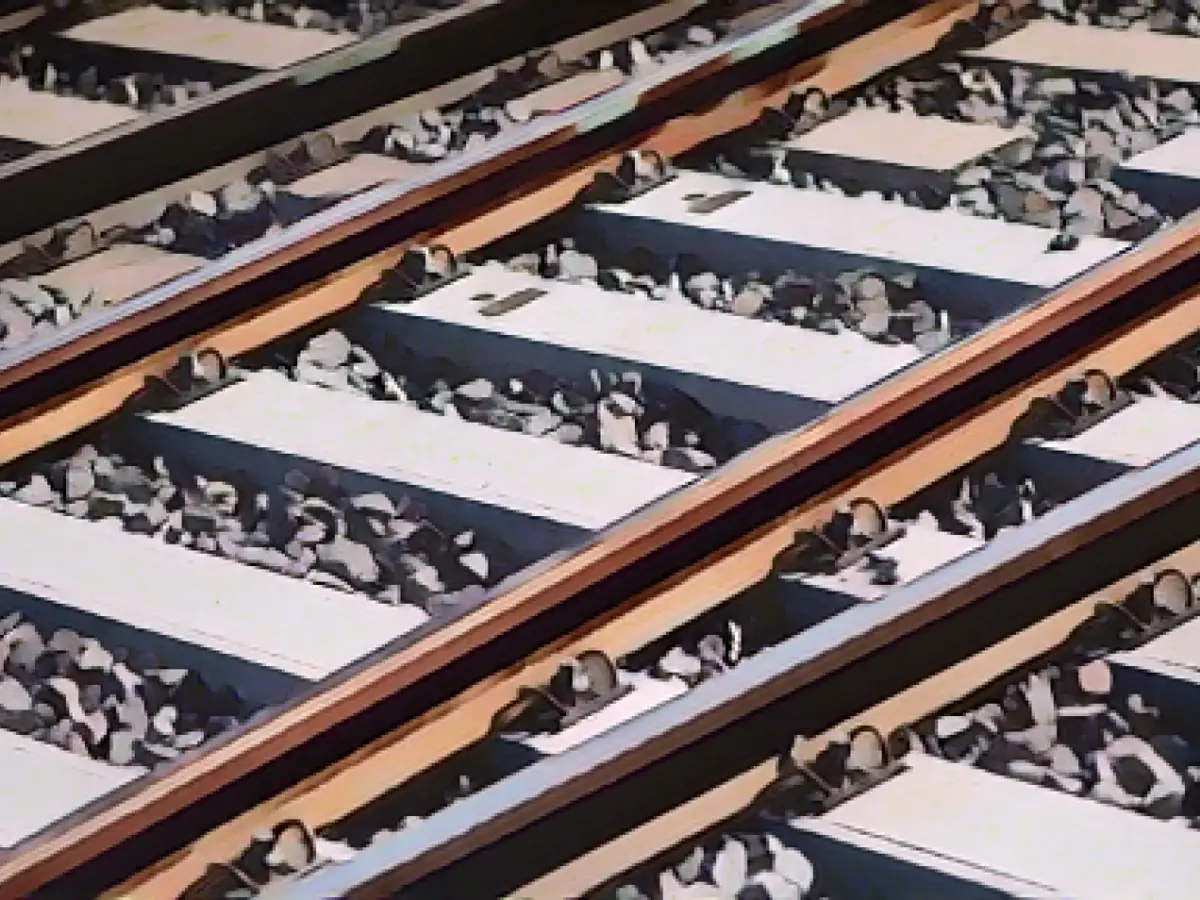Railroad - Local transport: Minister wants to double passenger numbers
Transport Minister Susanna Karawanskij (Left Party) wants attractive prices for local public transport in Thuringia and a doubling of passenger numbers by 2030, she said on Tuesday in Erfurt at the presentation of a concept for the expansion of local rail transport. It is about "climate protection with social responsibility". Many people are currently complaining that their homes are not sufficiently accessible by bus and train.
The "rail infrastructure master plan" should provide the framework for improvements. However, according to Karawanskij, more money would have to be allocated to this in the state budget in the coming years. Criticism came from the coalition partners SPD and the Greens.
Too late - criticism from SPD and Greens
"The fact that Thuringia needs such an overview of the modernization needs of the rail infrastructure was already stated in the coalition agreement over nine years ago. The fact that the first results are only now available is not expedient," explained Lutz Liebscher, deputy leader of the SPD parliamentary group. Green MP Laura Wahl said that the master plan "continues the minister's defensive transport policy".
According to Karawanskij, the aims of the Thuringian concept are to further electrify and expand the rail network, extend platforms and modernize and convert stations to make them barrier-free. An expert report is also investigating the reactivation of eight railroad lines that are no longer in use.
1600 kilometers of railroad network
According to the Ministry of Transport, Thuringia has a dense railroad network with 1,600 kilometers of track, but this is electrified at a below-average level compared to the rest of Germany, which is hindering the decarbonization of rail transport.
The master plan should help to reduce greenhouse gas emissions by up to 95 percent by 2050, as required by law in Thuringia. Transport is responsible for a quarter of all CO2 emissions.
Another goal is to make transport organization more digital. One aspect of the transport turnaround is also the expansion of rail freight transport. The master plan should develop projects to shift freight transport to rail, which could be supported by the state. A "Thuringia Mobility Network" is to be established as a platform in the coming year.
The report on the reactivation of disused railroad lines, which was commissioned by the ministry from the company VerkehrsConsult Ingenieurgesellschaft mbH, is the prerequisite for feasibility studies, said the minister. These are planned from 2025 if funding can be secured.
Revitalization of old routes?
The Kyffhäuserbahn (Bretleben - Bad Frankenhausen), the Unstrutbahn (Wangen - Artern), the Pfefferminzbahn (Straußfurt - Großheringen), the Höllentalbahn (Blankenstein - Marxgrün), the Werrabahn (closing the gap between Coburg and southern Thuringia), the Rennsteigbahn (Ilmenau - Themar), the Ohratalbahn (Gotha - Gräfenroda) and the Max- und Moritzbahn (Probstzella - Ernstthal am Rennsteig) were examined.
The potential, costs and transport benefits of these disused lines were discussed. The effects on regional development, climate and environmental protection factors and freight transport were also evaluated. The financing of the revitalization of lines, but also their permanent operation, had to be ensured. A "reactivation at any price" is rejected. However, according to Karawanskij, priority must be given to maintaining, modernizing and expanding the existing rail network.
The minister pointed out that the federal government is responsible for local and long-distance rail infrastructure. It has to ensure their maintenance and expansion. The state orders and pays for local rail transport services.
Expert opinion
Read also:
- A clan member is punished here
- Traffic lawyer warns: Don't talk to the police!
- Will he be convicted as Jutta's murderer after 37 years?
- He also wanted to kill his cousin
- Despite the dense 1,600-kilometer railroad network in Thuringia, its electrification level is below average compared to the rest of Germany, according to Minister Susanna Karawanskij, which hampers the decarbonization of rail transport for climate protection.
- In response to the presentation of the concept for expanding local rail transport, coalition partners SPD and Alliance 90/The Greens criticized the late revelation of the "rail infrastructure master plan," expressing dissatisfaction with the delayed modernization efforts.
- As part of the railroad revitalization initiative, Karawanskij mentioned the potential reactivation of eight disused railroad lines, including the Kyffhäuserbahn and the Werrabahn, aiming to reduce greenhouse gas emissions and support sustainable regional development.
- Transport Minister Susanna Karawanskij emphasized that the aim of the local transport strategy in Thuringia is to further expand and modernize the rail network, making it more accessible and barrier-free for passengers, and encouraging a shift towards sustainable rail freight transport.
- In her speech, Karawanskij argued that while the goal of reducing greenhouse gas emissions by up to 95 percent by 2050 is essential, the focus should be on improved local rail infrastructure and better utilization of the existing rail network, instead of revitalizing disused lines eagerly.
Source: www.stern.de








